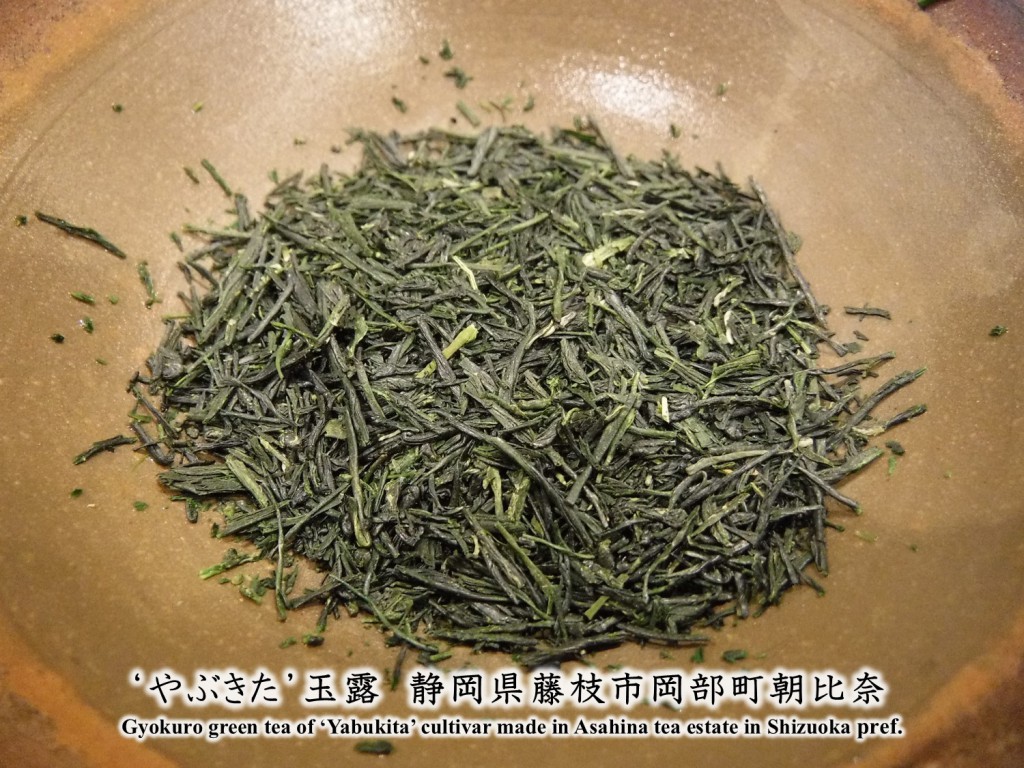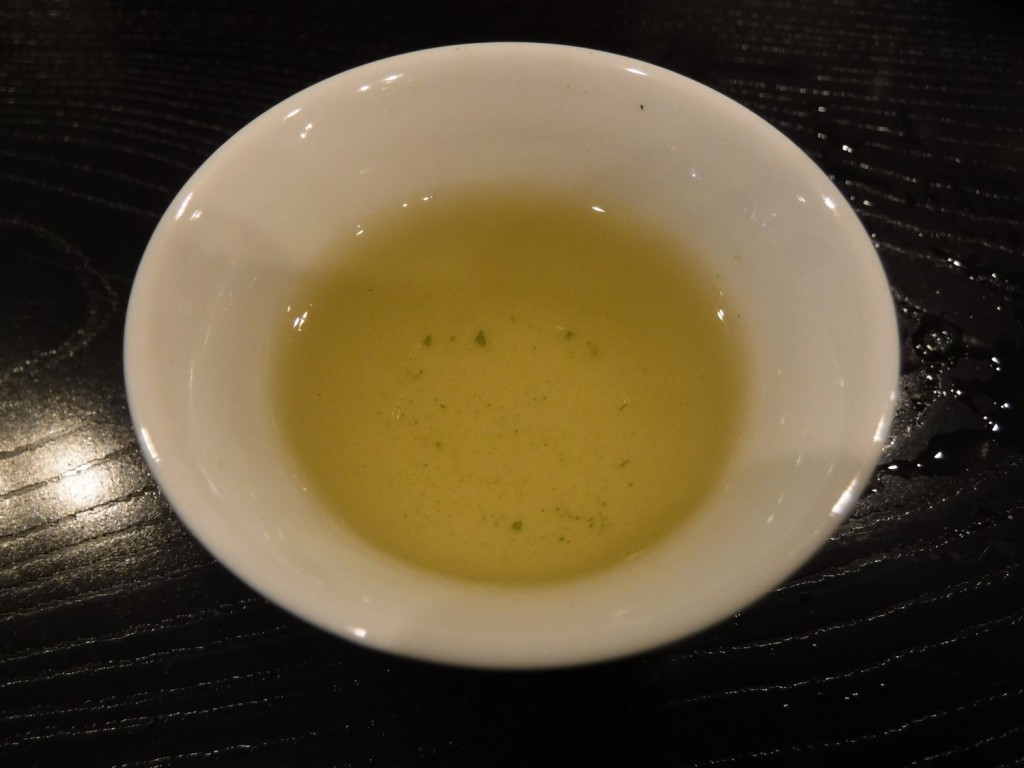Shinkoju is the unique tea store which lines the widest variety of single-cultivar teas.
The owner has many connections to tea estates and single subtle tea farms.
In the same time, he acts as a Japanese Tea Instructor. He constantly holds tea seminars for the customers. On 23th November, he invited Mr. Weugue to make a seminar about Gyokuro green tea, who is the first French man certified as a Japanese Tea Instructor.
Mr. Weugue explained how to brew Gyokuro and characteristics specific to each tea estate, such as shading method, processing etc.
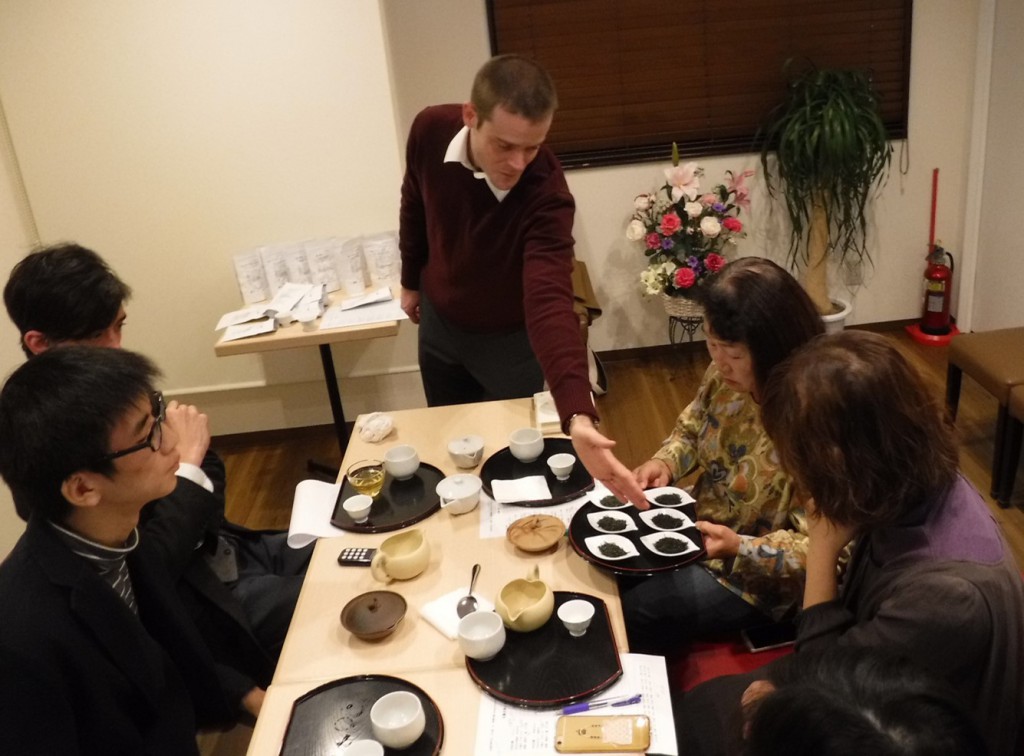
As for the difference in processing among tea estates, the appearance of loose leaf tea made in Uji tea estate tends to be more loosely comparing with those made in other tea estate such as Asahina tea estate in Shizuoka pref. and Yame tea estate in Fukuoka pref. The appearance of Gyokuro made in Asahina tea estate is processed tin-shaped like pine leaves.
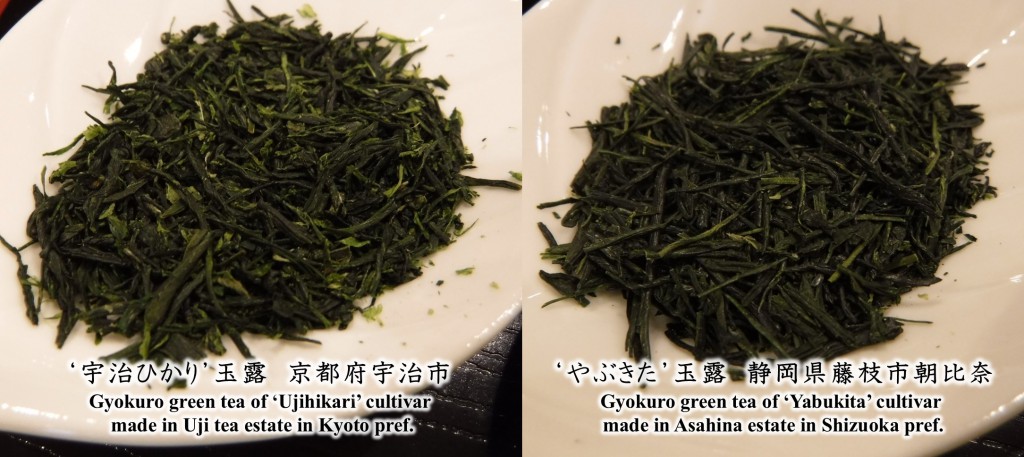
The difference in appearance of Gyokuro green tea among tea estates.
Shading method is also different among tea estates. Shading tends to increase tea leaves’ area, make the leaves’ thickness thinner and deepen the green color of tea leaves, because tea leaves expand and increase chlorophylls in order to increase their photosynthetic rate. Tea farmers in Kyoto tends to shade tea plants not so intensely, because severe shading results in too thin leaves, which is undesirable for their processing.
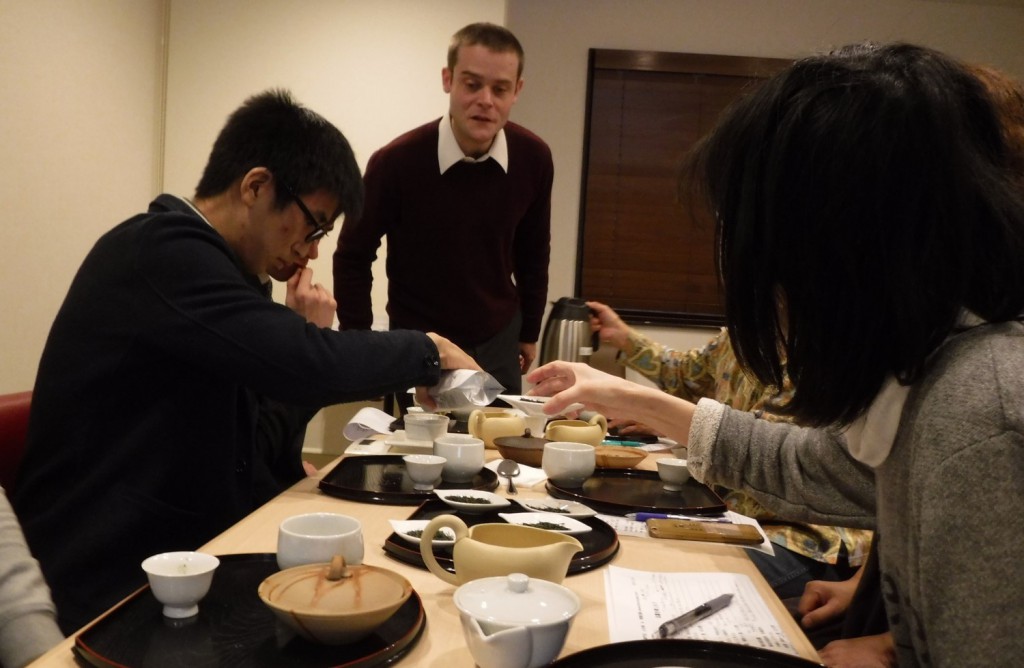
Gyokuro has rich umami because of higher content of amino acids due to the long shade cultivation. For the purpose of enjoy the richness of umami, Gyokuro green tea is generally brewed under lower temperature between 40 and 60 degree Celsius approximately based on the difference in diffusion rate of each components such as amino acids, caffeine, catechins etc. As for the scientific basis, please see the related post.
To adjust the water temperature properly, we repeated pouring the hot water from a tea ware to the other a few times. An exchange to another cup, the temperature of water decreases about 10 degree Celsius, explained by Mr. Weugue.

Brewing Gyokuro green tea each other based on the instruction of Mr. Weugue.
Appearance and infusion of each Gyokuro are as follows.
(1) Hand-plucked ‘Goko’ cultivar made in Kyotanabe city in Kyoto
‘Goko’ is the cultivar suit for Gyokuro, derived from one of the native variety in Kyoto region. The original native variety was selected and propagated by Kyoto prefectural Tea Research Institute (short name, the correct name is too long).
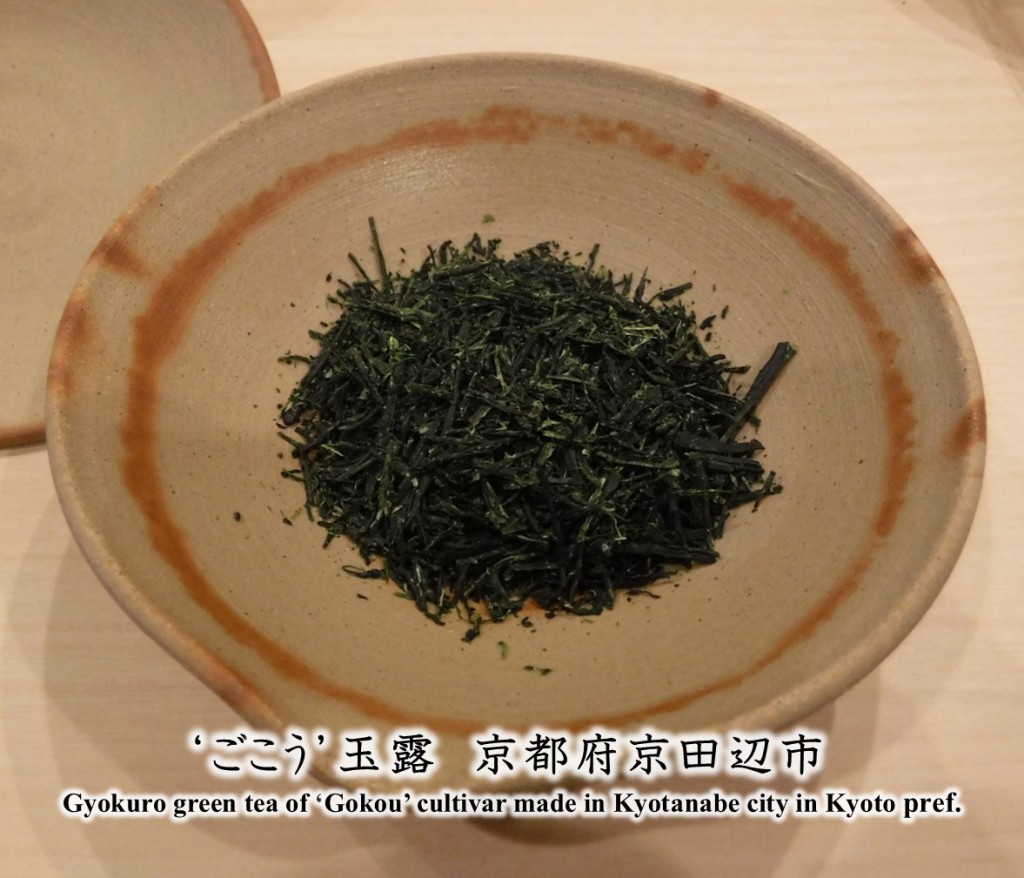
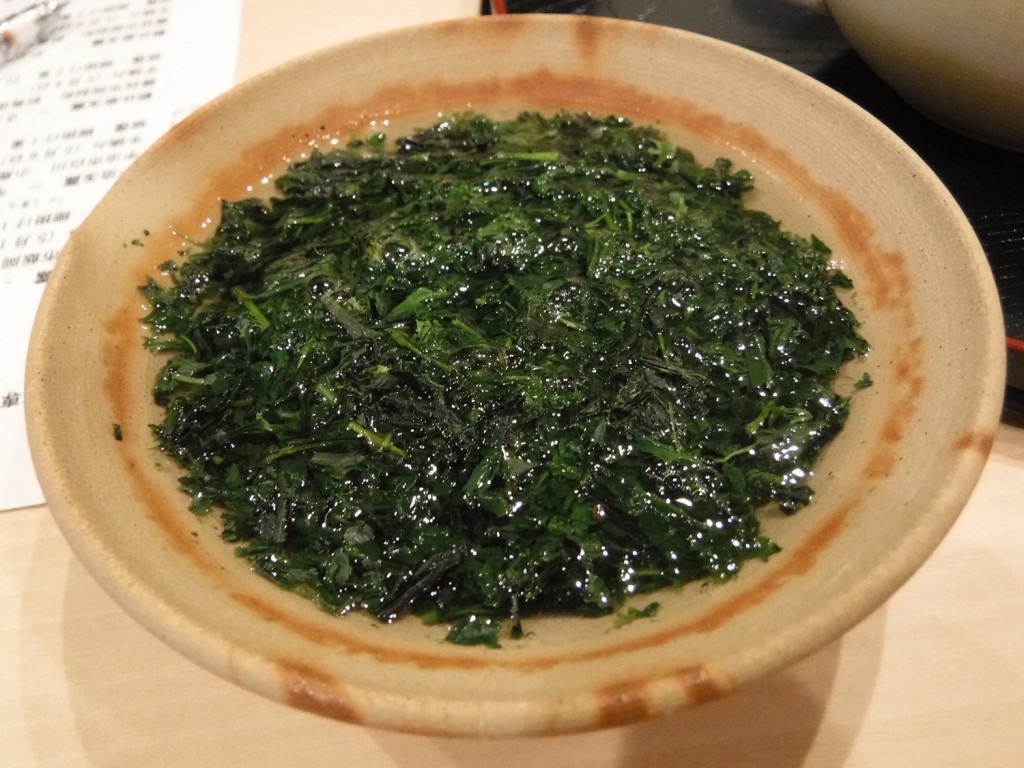
The 1st infusion contains much umami, somehow similar to “Dashi” soup stock extracted from “Kombu” kelp.

(2) Hand-plucked ‘Ujihikari’ cultivar in Uji tea estate in Kyoto
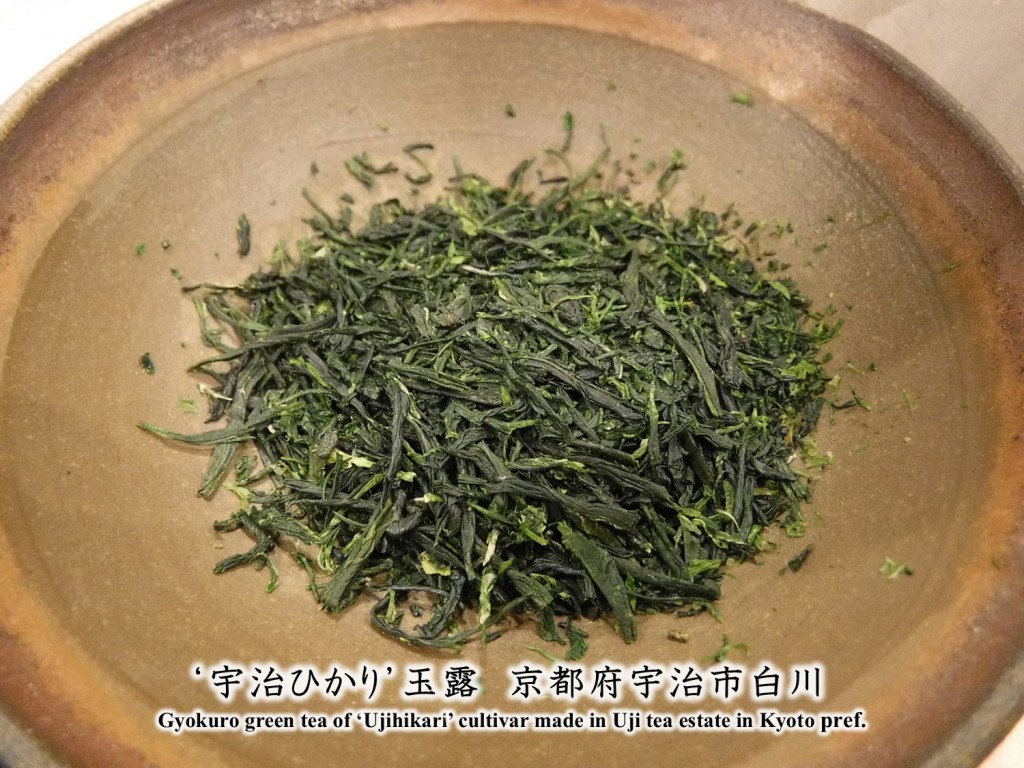
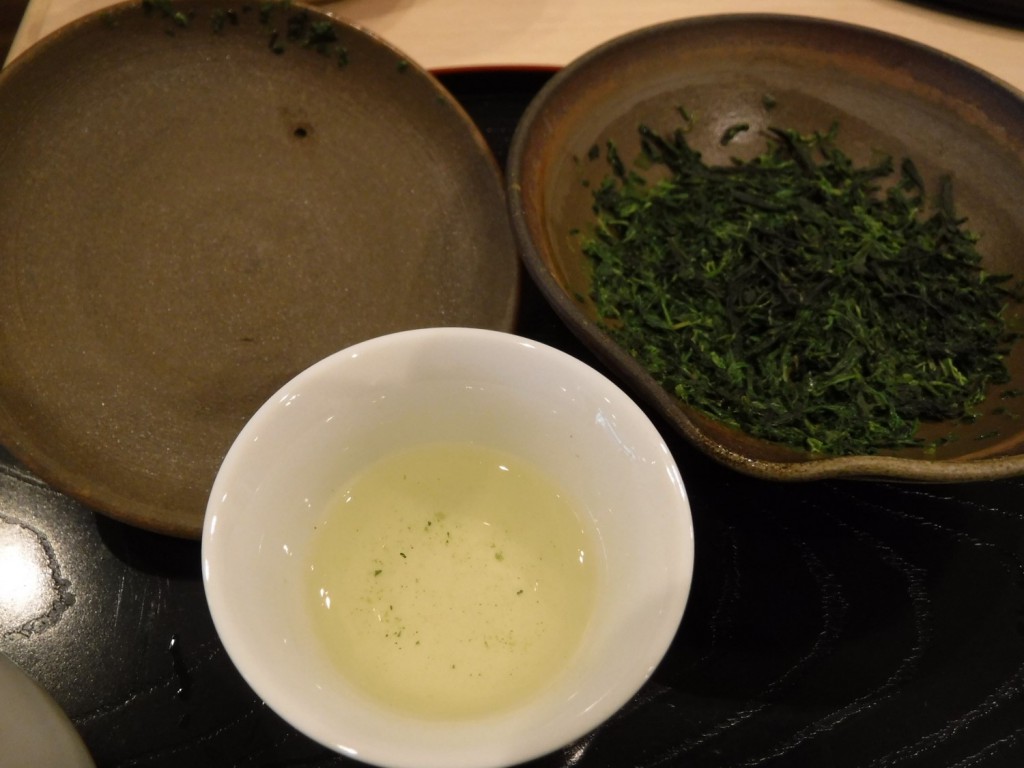
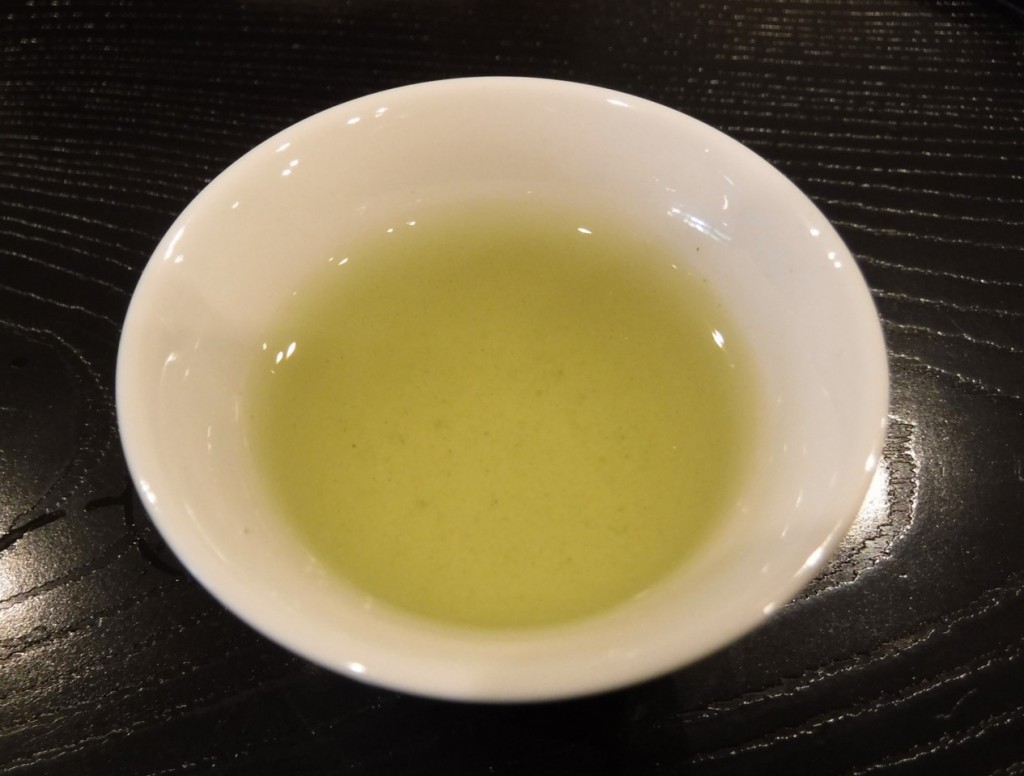
(3) Hand-plucked ‘Saemidori’ cultivar in Asahina tea estate in Shizuoka
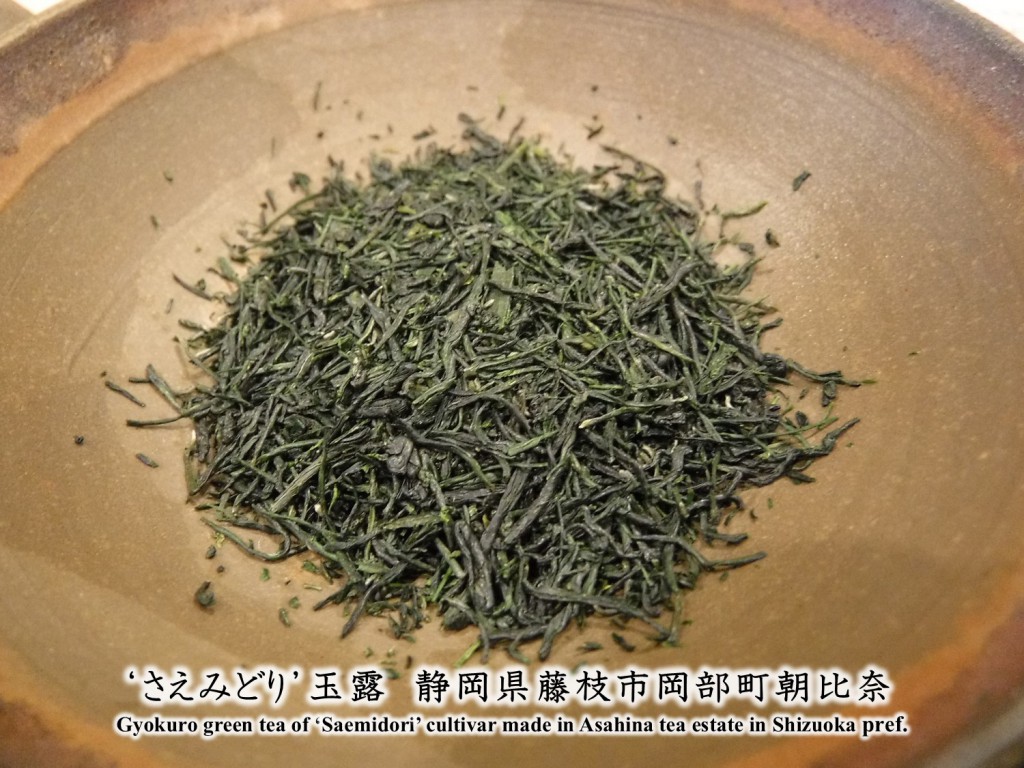
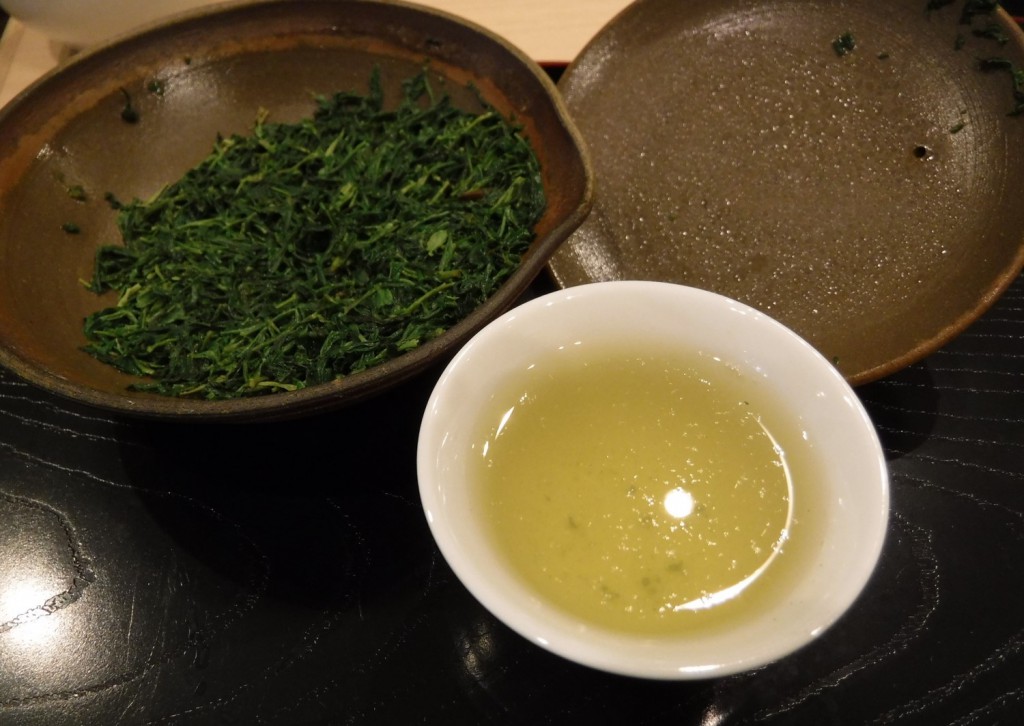
(4) Hand-plucked ‘Yabukita’ cultivar in Asahina tea estate in Shizuoka
